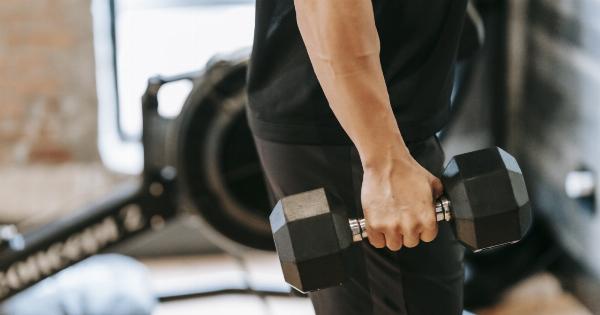Breathing is an essential and involuntary process that sustains life. While most of us take it for granted, the quality of our breathing can have a significant impact on our overall health and well-being.
Engaging in lung-strengthening exercises can help improve our respiratory system, enhance lung capacity, and promote better breathing patterns. In this article, we will explore three effective exercises to strengthen your lungs and enhance your breathing.
1. Diaphragmatic Breathing
Diaphragmatic breathing, also known as belly breathing or deep breathing, involves engaging the diaphragm, a dome-shaped muscle below the lungs.
This exercise promotes efficient oxygen intake while strengthening the diaphragm and the muscles surrounding it.
To practice diaphragmatic breathing:.
- Find a comfortable and quiet place to sit or lie down.
- Place one hand on your chest and the other on your abdomen, just above the navel.
- Inhale slowly and deeply through your nose, allowing your abdomen to rise. Your chest should remain relatively still.
- Exhale gently through your mouth, letting your abdomen fall.
- Continue inhaling and exhaling deeply, focusing on the movement of your abdomen, for several minutes.
Performing diaphragmatic breathing for a few minutes each day can gradually strengthen your diaphragm and improve your breathing efficiency.
2. Pursed Lip Breathing
Pursed lip breathing is a simple exercise that helps regulate your breathing pattern, reduce shortness of breath, and improve overall lung function. It involves controlled breathing through pursed lips, mimicking blowing out a candle.
Follow these steps to practice pursed lip breathing:.
- Sit or stand in a comfortable position.
- Inhale slowly and deeply through your nose.
- Purse your lips as if you’re about to blow out a candle.
- Exhale gently and slowly through pursed lips. Try to make your exhale twice as long as your inhale.
- Repeat this cycle for a few minutes, focusing on the sensation of your breath and the movement of your abdomen.
Pursed lip breathing can be particularly helpful during activities that require more exertion or when experiencing shortness of breath. Regular practice can improve your lung capacity and provide relief from respiratory difficulties.
3. Interval Training
Interval training exercises involve alternating between periods of intense physical activity and rest or low-intensity exercise. While it is commonly associated with cardiovascular fitness, interval training can also benefit lung health.
Here’s how you can incorporate interval training for lung-strengthening:.
- Choose an aerobic exercise of your preference, such as jogging, cycling, or swimming.
- Warm up for about 5 minutes at a moderate pace.
- Begin the intense phase by increasing the intensity of your exercise for 30-60 seconds. This could involve running or cycling at a faster pace.
- Follow the intense phase with a recovery phase of 1-2 minutes, where you reduce the intensity to a comfortable level.
- Repeat this cycle of intense and recovery phases 5-6 times during your workout session.
Interval training challenges your cardiovascular system, increasing its efficiency and demand for oxygen, which in turn strengthens your lungs.
It also helps build respiratory endurance, allowing you to engage in physical activities with less strain on your breathing.
Conclusion
By incorporating these lung-strengthening exercises into your routine, you can enhance your breathing capacity, improve your respiratory health, and enjoy the numerous benefits of optimal lung function.
Diaphragmatic breathing, pursed lip breathing, and interval training all contribute to better lung health and can be practiced by people of all fitness levels. Make them a part of your daily regimen and experience the positive impact on your overall well-being.






























